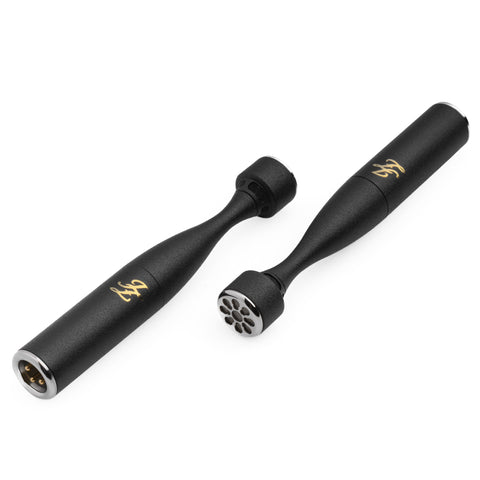Hello, and welcome back to the blog! This week is pretty exciting for me as I get to share some pretty substantial information with the world. But first, it’s that time of the month again where we begin a new focus as well, which this month is simply Small Diaphragm Condensers. We’re going to explore the many uses, perks and benefits of using them, as well as some more unconventional ways to put them to good use.
Let’s dive in!
A Quick Story
So very quickly before I get into the main part of this, I need to tell you all a short story. Way back when I was still just starting to work for JZ Mics, I was of course very curious of trying out as many of the products as possible in order to get to know the product line further and then write about them. The first mics I ever asked about were unfortunately discontinued, and so I’ve never had a chance to use them, however I was able to use their slightly different version which again has now also been discontinued. Fast forward to last week when I found out that the mics I originally wanted to try have actually been added back into the products we currently have available, and finally, after 3 years or so, I was able to hold a pair of the brand new JZ BT-202 Microphones!

The BT-202 Matched Pair
So, now you know why I’m so excited for this blog focus and this blog in particular today, let's talk about the BT-202’s in a little bit more detail, shall we?
Possibly the best part about these mics is that they are so lightweight and easy to set up. In the past when I’ve been working with SDC’s it’s been a rather laborious process to get the mics to sit where I’d like them to, and stay there. There are a few examples I have in my mic locker that for that one reason don’t really get used anymore at all! The second and arguably best perk about the BT-202 Pair is that they just sound beyond incredible. They’re smooth, natural, and surprisingly warm in their sound profile which lends them to more options in terms of what they can record.
Oftentimes, pencil condensers can be extremely harsh and unwelcoming in their sound which isn’t ideal when they’re commonly used on overheads or piano, electric guitar, and more. Thankfully the BT202’s are much more comfortable to listen to straight off the bat, with a very even profile with just a touch of a bump in the upper frequencies to add some subtle presence around the 5-7.5Khz region as you can see below in the graph.

Because there are so many uses for SDC mics, having a natural sound profile helps you utilize these mics in more than the traditional ways, without the risk of worrying about them becoming too shrill in the mix when you have multiple layers or tracks using pencil condensers. One of my favorite applications for this style of mic is to literally tape it to the main dynamic microphone I have set up for the Snare top microphone, with the capsules perfectly aligned next to each other. I do this because it allows me to not just use the dynamic capsule sound, such as the HH1, but have a couple of flavors to blend together and add more to the rasp of the snare.

However, in recent years, because the pencil condensers I’ve used in the past have been so brittle and shrill sounding, as well as highlighting some less than desirable sounds from the snare such as excessive ring or unwanted overtones, I’ve strayed away from using them as much as I would like. Thankfully, the BT-202 is nothing like the past pencil condensers I’ve used, and is by far and away the best performing SDC I’ve had the pleasure of using.
In the coming weeks, I’ll be putting together an assortment of various comparison videos, samples, and examples of the sorts of places you can expect to find the BT-202 feel right at home. For now though, I can share with you what I already know about where they fit right in, such as: on acoustic guitar, as I’ve already mentioned as overheads for drums or as a second snare microphone, piano or other percussive instruments, as well as violin or classical string and brass instruments. One interesting area I hope to experiment with as well, is how well they work on electric guitar cabinets as this is an area that doesn’t always fit the application of a small diaphragm condenser, but in some rare cases it can play incredibly well and sound sublime so I hope to try it out in the coming weeks on that application too. Until then, Andris was kind enough to share with me a selection of samples in a short comparison video he did back when the original iteration of these mics (the BT-201 Pair) was available, placed as an overhead pair with a great drummer called Jekabs Zemzaris, recorded at Sound Division Studios which you can watch below:
Until next week, make sure if you already own one of our JZ Mics that you are part of our ever growing community on facebook, where there will be tons of news shared and further examples and samples exclusively available to the members, as well as news and access benefits only available to members only.
